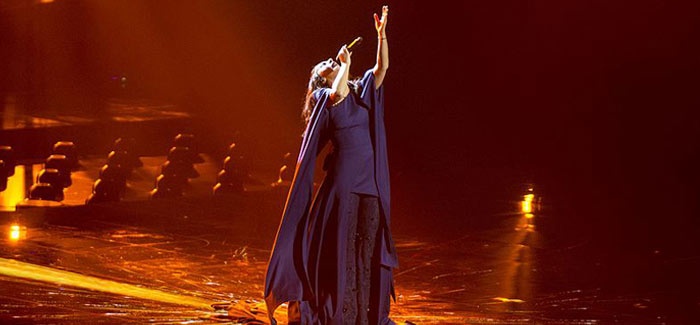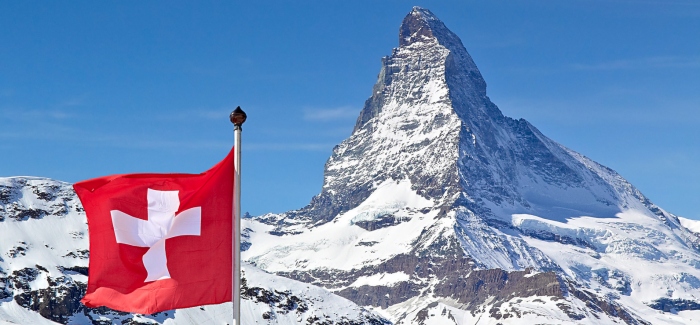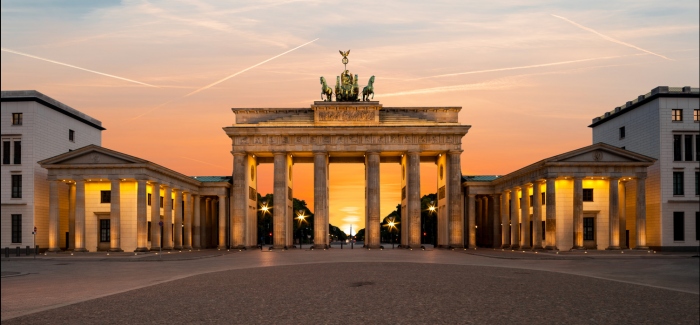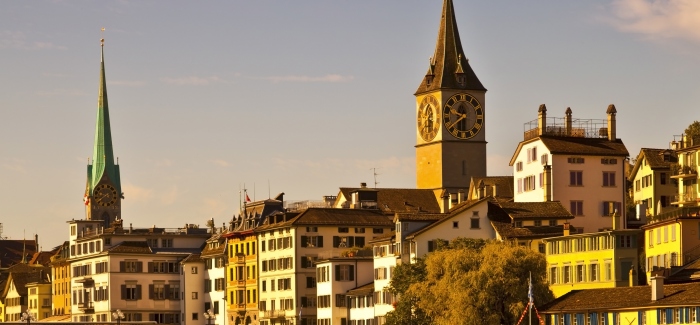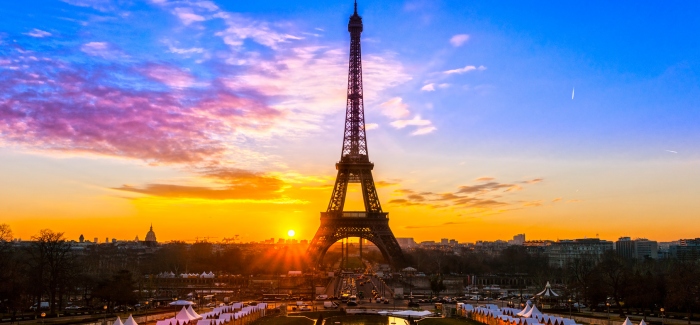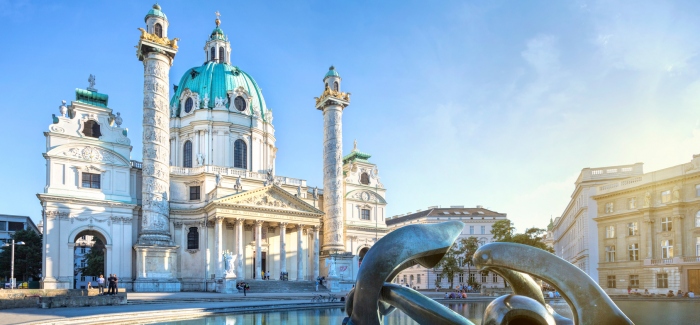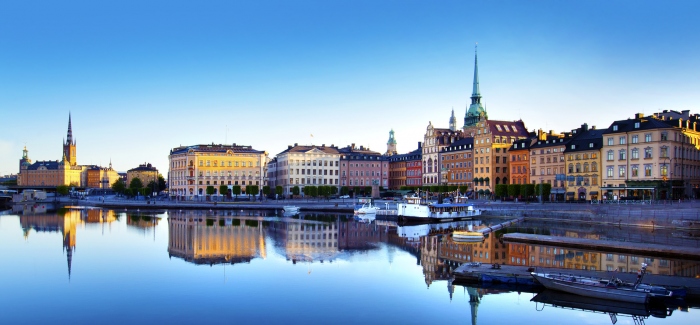Choose to study abroad in Denmark and you'll find more than enough to keep you busy. Here are our top 10 things to do if you choose to head to Scandanavia's southernmost outpost.
Hamlet famously declared something to be rotten in the state of Denmark, but nowadays it seems nothing could be further from the truth.
If opinion studies are to be believed, Denmark is the happiest nation on earth. Danes enjoy an unusually egalitarian society with a distinctive identity as the gateway between Scandinavia and continental Europe. They also have a reputation for being both beautiful and unbelievably polite.
A nation of just over five million people, Denmark offers a range of pursuits and attractions that will appeal to any prospective undergraduate student – from the attentively designed urban chic of Copenhagen to the remote beauty of the fjords.
1. Learn about Denmark’s Viking history
Danes may have a reputation for their serene national temperament these days – but they weren’t always so chilled out. During the Middle Ages, the Vikings (from parts of Denmark, Norway and Sweden) plundered and pillaged swathes of Europe and have since been caricatured as bloodthirsty warmongers.
In reality there was more to the Vikings than just fighting, and their civilization left behind an array of fascinating relics, many of which are on display throughout Denmark: from the Jellig Stone to the famous fort at Trelleborg.
Viking relics and museums are spread across the country, and paying a visit to at least one of these sites during your time studying abroad will shed some light on a fascinating chapter of Scandinavian and world history.
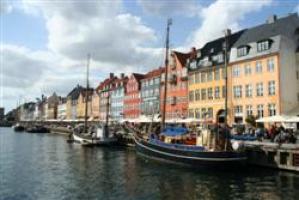 2. Experience Copenhagen, Scandinavia’s capital of cool
2. Experience Copenhagen, Scandinavia’s capital of cool
Nearest universities: University of Copenhagen; Technical University of Denmark; Copenhagen Business School; IT-University of Copenhagen
Described by Lonely Planet as “the bridge between Western Europe and Scandinavia” , Copenhagen merges quaint local character and Nordic history with its own distinctive brand of cosmopolitan chic. As a first-time visitor, a great way of getting to know the city is by hiring a bike from one of the many rental shops around the city centre.
While in Copenhagen you should make sure you sample the local cuisine – with a mixture of international fare and Danish specialities, such as smørrebrød (open-faced sandwiches) and frikadeller (meat balls), Copenhagen has 11 Michelin Star restaurants, more than any other city in Scandinavia.
Once you’re done, round off your meal with the famous soft ice cream at the ice bar on Strandvej – you’ll see why people queue around the block for it during the summer. On sunny days, there is no better place to hang out than the waterfront at Nyhavn. Take a boat ride sit in the sun and make inroads into your reading list – or take time off and enjoy an (expensive) beer with the locals!
3. Go to Roskilde Festival, one of Europe’s biggest and best
Nearest universities: Roskilde University
Every summer in early July the ancient Viking city of Roskilde hosts Roskilde Festival, one of the biggest and most famous music festivals in Europe. Headline acts on the main Orange Stage tend to fall under the category of ‘rock star’ - in recent years the likes of Coldplay, Muse, Oasis, Radiohead, The Who, and Red Hot Chili Peppers have all played here.
The seven other stages showcase the gamut of musical styles, and feature bands from all over the world, as well as many up-and-coming Danish acts.
For those unfamiliar with big music festivals, camping over can require a certain forbearance. Like Glastonbury Festival in England, the weather at Roskilde can be unpredictable, and it is not unknown for the campsite to turn into a mudbath – though for many seasoned festival-goers this is all part of the fun.
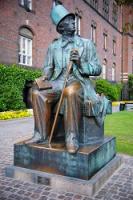 4. Check out the Hans Christian Anderson Museum in Odense
4. Check out the Hans Christian Anderson Museum in Odense
Nearest universities: University of Southern Denmark; University of Odense
Hans Christian Anderson’s fairytales such as ‘The Little Mermaid’, ‘Thumbelina’, ‘The Emperor’s New Clothes’ and ‘The Ugly Duckling’ have been part of the popular imagination for generations, and have spawned countless modern-day tributes.
The Hans Christian Anderson Museum in Odense makes the author’s life sound rather like one of the fairytales that made him so famous. As the museum’s website says, “The museum exhibitions tell of the writer's life, from his childhood years as the son of a poor shoemaker in Odense via the hard times he spent on his way towards realising his dreams in Copenhagen, his schooling, debut as a writer and career as an author, old age and death.
You can follow the writer's acquaintances, love life, artistic career and his many journeys.” So swap your course books for some fairytales at least once while studying abroad in Denmark.
5. Go and see Hamlet's castle
Nearest universities: University of Copenhagen; Technical University of Denmark; Copenhagen Business School; IT-University of Copenhagen
Kronberg Castle at Elsinore, eastern Denmark, provides the eerie setting for Shakespeare’s most famous play, and the most celebrated tragedy in English literature, Hamlet. It’s not hard to see why Elsinore was deemed an appropriate backdrop for the existential pangs of The Dane – built on an outcrop projecting into the Baltic Sea, it cuts a lonely, spectral profile against the coastal skyline.
Numerous performances of Hamlet have been staged at the castle, with famous thespians from Lawrence Olivier to Jude Law taking on what is widely regarded as one of the most challenging roles in theatre.
Did you know? Regardless of its literary associations, Kronberg Castle is an architectural and historical attraction in its own right. One of the most important Renaissance castles in Northern Europe, it is a UNESCO World Heritage Site with a 600-year history including stints as both an important royal castle and a prison.
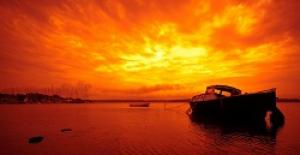 6. Go boating on the fjords
6. Go boating on the fjords
The Danish ‘fjords’ at Limfjord, Ringkobing and along the Baltic Sea Coast, are among the most famous in the world, which is ironic, given that they’re not technically fjords . They are, however, tranquil, secluded and above all beautiful – and an important feature of Denmark’s traditional maritime and fishing culture.
If you’re really taken by the fjords in Denmark, there are many more across the Skagerrak in Norway that offer access to the age-old glacial beauty of the Scandinavian landscape. In particular, Geirangerfjord is famed for its spectacular alpine views and is a UNESCO World Heritage Site – taking a boat tour offers some serious photo opportunities!
7. Get creative at Skagen
Nearest universities: Aalborg University; University of Odense
At the beginning of the 19th Century, Danish artists, writers and bohemians flocked to the picturesque sandy shores of Skagen and the surrounding coastline to inspire the creative muse and escape the trappings of urban life. It isn’t hard to see why they were drawn to the area – situated on Denmark’s northernmost tip and now a popular resort, the Skagens coastline features rolling sand dunes and stunning views across the bay where two parts of the North Sea meet.
A great place to hit the beach during the summer, or to take an atmospheric, blustery coastal walking tour in the fall or spring, Skagen is a perfect place to work on your sketchbook or brush up your photography skills. For those who prefer looking at art to producing it, Skagens Museum is a must-see - featuring hundreds of works by the early 19th Century artistic collective who made the area famous. The museum also houses an important collection of Naturalist paintings depicting the local coastline.
 8. Check out Freetown Christiania, the world’s largest commune
8. Check out Freetown Christiania, the world’s largest commune
Nearest universities: University of Copenhagen; Technical University of Denmark; Copenhagen Business School; IT-University of Copenhagen
Freetown Christiania, or ‘fristaden’ (the freetown) has had a chequered history since it was first established in 1971. What was initially a cheeky attempt by squatters to use unoccupied military land in Copenhagen as a playground for children has since developed into the world’s largest commune , with around 850 permanent residents crammed into a 0.34 sq km space. It even has its own flag.
Did you know? Though Christiania’s residents may stand for peace and love, their relationship with the authorities hasn’t always been so harmonious. The government stopped turning a blind eye to the free trade of cannabis in the commune in 2004, leading to various protests and conflicts. However, the commune is generally welcoming to visitors and you are free to sample the quirky and unique atmosphere by taking a walking tour.
9. Visit the ‘Black Diamond’ library
Nearest universities: University of Copenhagen; Technical University of Denmark; Copenhagen Business School; IT-University of Copenhagen
Exemplifying the cool, elegant and functional style of modern Copenhagen, the ‘Black Diamond’ extension to the Royal Danish Library is the centrepiece of an ambitious cultural and architectural regeneration project along the city’s famous waterfront. Copenhagen’s answer to London’s British Library, the Black Diamond features a 600-seat auditorium, hosting concerts, theatrical performances, literary events and conferences. It also houses the National Museum of Photography.
If you’re looking for a place to study in style, the Royal Danish Library is the place for you. Home to the most extensive catalogue in Scandinavia, it features original manuscripts by major Danish literary figures such as Hans Christian Anderson and Søren Kierkegaard. Equally, if you’re in tourist mode it is an architectural gem that deserves a visit regardless of whether you actually have any intention of picking up a book.
 10. Mix the old and the new in Aarhus
10. Mix the old and the new in Aarhus
Nearest universities: Aarhus University
Denmark’s second largest city, Aarhus is both a heritage site teeming with historical and cultural treasures, and a bustling modern city with one of the largest ports in Northern Europe.
The old town features many important and fascinating museums and cultural attractions, including Den Gamle By - an open-air museum providing a window to the city’s medieval past.
For those who prefer to look forward, wait until the sun goes down and head out to sample the happening Aarhus nightlife – you’ll see a very different side to the city. A student city with a lively cultural scene, every year Aarhus hosts Aarhus Festuge, or ‘Aarhus Partyweek’, the largest cultural festival in Scandinavia.
Once you’ve finished those:
- Visit Legoland
- Try your hand at handball
- Treat yourself to a bit of pampering at one of Denmark’s many health resorts
- Get acquainted with Denmark’s geological history at the Geocenter Møns Klint
- Ride the roller coasters in Copenhagen’s Tivoli Gardens amusement park
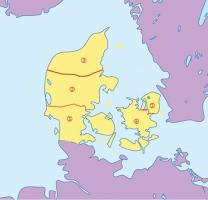 Top Danish universities by region
Top Danish universities by region
Capital Region of Denmark: University of Copenhagen; Technical University of Denmark; Copenhagen Business School; IT-University of Copenhagen
Central Denmark Region: Aarhus University
North Denmark Region: Aalborg University; University of Odense
Region Zealand: Roskilde University
Region of Southern Denmark: University of Southern Denmark


